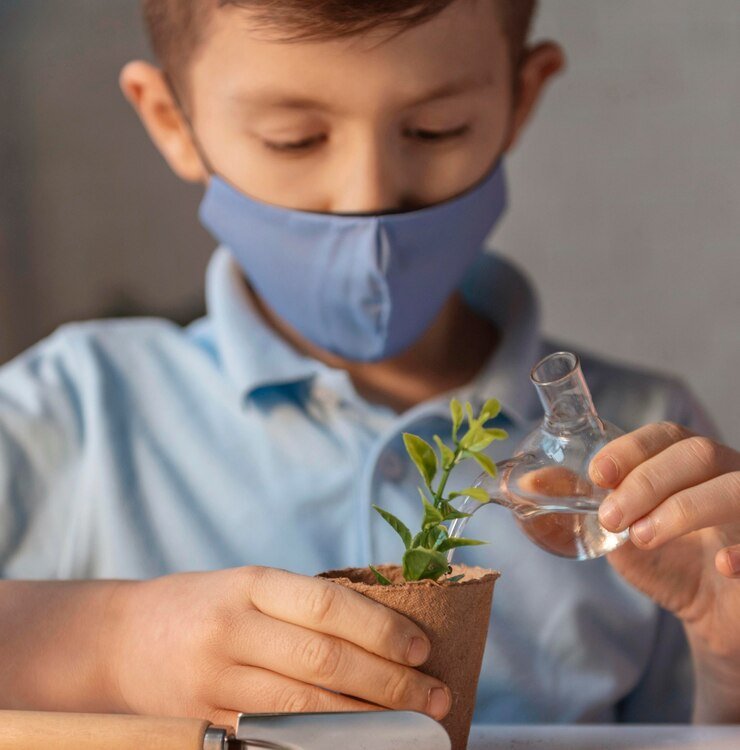Agricultural Science is an essential subject that introduces students to the basic concepts and practices of farming, animal care, and environmental sustainability. For the second term in JSS 1, students will focus on various critical topics, with an emphasis on the classification and use of farm animals, a subject that is fundamental in understanding modern farming techniques.
Here is a comprehensive revision of the topics, followed by 10 likely questions that could appear on the examination.
Week 1: Revision of Last Term’s Work
Before diving into the new topics for the second term, it’s essential to review what was learned in the previous term. This helps reinforce knowledge and ensures a strong foundation for the current term’s lessons.
Key Concepts to Revise:
- Introduction to Agriculture: Understand what agriculture is, its importance in society, and how it contributes to food security and employment.
- Types of Farming: Recall the various types of farming, such as subsistence farming, commercial farming, and mixed farming.
- Soil Science: Review soil types and the importance of soil fertility, and understand how to improve soil for better crop production.
- Plant Growth and Development: Remember the stages of plant growth, from germination to maturity.
Likely Questions for Week 1:
- What is agriculture, and why is it important?
- Define subsistence and commercial farming. How do they differ?
- List three types of soil and explain how each affects plant growth.
- Describe the process of germination in plants.
- What are the key factors that influence soil fertility?
- Explain the difference between organic and inorganic fertilizers.
- What are the stages of plant growth?
- How does weather affect farming activities?
- What is crop rotation, and why is it practiced?
- How do farmers manage pests and diseases in plants?
Week 2: Classes and Use of Farm Animals
This week focuses on understanding farm animals, their classifications, and their uses in farming. Farm animals can be categorized into different types based on their roles in farming, such as for meat, milk, or as draft animals.
Key Concepts to Cover:
- Classification of Farm Animals:
- Livestock: These include animals like cattle, goats, sheep, pigs, and poultry.
- Draft Animals: Animals used for pulling plows and carts (e.g., oxen, horses).
- Pets and Other Farm Animals: Animals like dogs and cats, which are often used for guarding farms.
- Uses of Farm Animals:
- Meat production (e.g., cattle for beef, chickens for poultry).
- Milk and dairy products (e.g., cows, goats).
- Wool and hides (e.g., sheep for wool, cows for leather).
- Labor (e.g., oxen for plowing, horses for transport).
Likely Questions for Week 2:
- What are the different classes of farm animals? Give examples.
- How do livestock contribute to food production?
- Explain the role of draft animals in farming.
- What is the importance of poultry in farming?
- Name three animals that provide milk and their uses.
- How is wool obtained, and which animal provides it?
- What is the role of dogs and cats on a farm?
- Discuss how farm animals help in maintaining farm security.
- What are some of the products obtained from cows besides meat and milk?
- What are the health benefits of consuming animal products from farms?
Week 3 to Week 9: Repeating the Classes and Use of Farm Animals
Each of these weeks will follow the same theme of classes and use of farm animals, but the lessons will progressively delve deeper into the specifics of each type of animal. The aim is to explore every aspect of farm animal care, management, and economic importance.
Expanding the Knowledge Base:
- Week 3 to Week 9 should cover in-depth lessons such as:
- Animal behavior and management: How to care for different animals and their needs.
- Animal breeding and reproduction: How to select animals for breeding and improve livestock.
- Animal diseases: Common diseases in farm animals and how to prevent them.
- Feeding practices: Understanding the nutritional needs of various animals.
- Farm animal productivity: Maximizing the output of farm animals through good management practices.
- Handling and slaughtering animals: Ethical and practical considerations.
Likely Questions for Week 3 to Week 9:
- What are the signs of good health in farm animals?
- How do you differentiate between a male and female farm animal for breeding?
- What is the importance of animal breeding in farming?
- Name three common diseases that affect farm animals and their symptoms.
- How can you prevent diseases in farm animals?
- What is the role of animal feed in farm animal productivity?
- How do you ensure that animals receive balanced diets?
- Describe the ethical considerations when handling farm animals.
- How is livestock breeding used to improve farm animals?
- What are the challenges of raising different types of animals on the farm?
Conclusion
This comprehensive revision of JSS 1 Agricultural Science for the second term focuses primarily on understanding the various classes and uses of farm animals. By grasping the roles animals play in farming—whether for meat, milk, wool, or labor—students will gain a solid foundation in agriculture. They will also become familiar with essential animal management practices that contribute to the success of farming.

